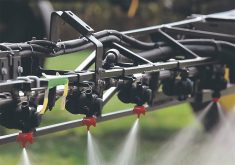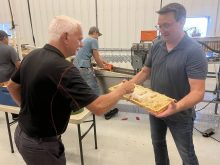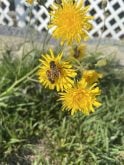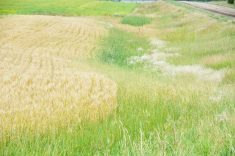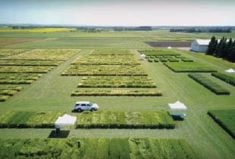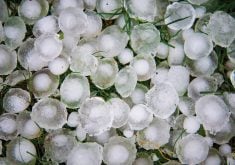If you build an eco-buffer, beneficial species will come.
An eco-buffer is a planned community of trees, plants, and herbaceous species that provide pollinator and wildlife habitat, shelter for livestock, nutrient cycling, and groundwater recharge. A newly created eco-buffer, designed as part of an ALUS (Alternative Land Use Services) project, will soon demonstrate its value to visitors of the Edmonton Corn Maze in Parkland County.
“Our council is extremely proud of this initiative,” said Parkland County Mayor Rod Shaigec at an ALUS event at the corn maze. “The project site will be used and featured in the future to create community awareness for the ALUS program, to demonstrate ALUS’s benefits for society as a whole, and to showcase local producers for the part they play as stewards of the environment.”
Read Also

Grazing ‘sweet spot’ boosts pasture performance
Timing-focused approach to pasture management touted to boost forage growth, livestock gains while also cutting farmer labour and inputs
Parkland County created the eco-buffer with the help of an agroforestry technician from the Alberta Woodlot and Extension Society as part of the ALUS program.
Eco-buffers are both multi-functional and self-sustaining.
The Edmonton Corn Maze eco-buffer, which separates the corn maze from a waterway, was designed by Luke Wonneck, an agroforestry technician with the Agroforestry Woodlot and Extension Society. About 1,300 plants — including native species of trees, shrubs and forbs — were planted on two-thirds of an acre in June.
“When you’re designing an eco-buffer, you need to look at the site context, the soil conditions, moisture, and vegetation — factors that will affect what you might want,” said Wonneck, who worked with the Edmonton Native Plant Group to select suitable species.
“You need to think about the needs of the farm that surrounds it and the needs of the greater landscape — the riparian area here. Then you need to think about the goals of what you want the eco-buffer to do.
“It’s a demonstration project, so we wanted lots of public access. Eco-buffers are a relatively new concept in Alberta, although they do build on research about riparian planting and shelterbelts.”
The eco-buffer will keep nutrients from the corn maze from entering the riparian area downhill. To minimize run-off and absorb nutrients, Wonneck and the team planted a wide buffer of woody species with diverse rooting depths to pick up nutrient run-off.
“Woody species are important because most of the run-off in Alberta happens in early spring, when the snowmelt is happening,” he said. “At that point, a lot of the herbaceous species are flattened by the snow. Woody species provide the physical barrier that will slow the snowmelt from running into the stream, and add nutrients to the soil rather than the stream.”
Tall, coniferous species were planted to provide a barrier and shelter in winter. Once mature, the eco-buffer will also serve as a noise barrier, minimizing traffic from the nearby highway. It will also provide habitat for pollinators.
“The pollinator service will not be benefiting the corn crop, because corn is wind pollinated,” said Wonneck. “But since it’s a demonstration site, we’ll showcase the intrinsic value of pollinators, so people can learn and think about it for their own property.”
Planning for pollinators means thinking about their needs when it comes to food, water, and shelter.
“Often in agriculture, we grow a lot of the same thing,” said Wonneck. “Canola, for example, only flowers for a short while, so when it is done flowering, the bees need other things to get pollen and nectar from.”
Having diverse flowers, particularly native flowers with overlapping blooming periods, sustains pollinators for the entire season. Another key is to group the same species of flower in clumps of three to five to meet bees’ preference for foraging from one type of flower at a time.
Bees like to be in the sun as much as possible, so taller species were planted on the north side of the eco-buffer so that the bees would have protection and maximum sun exposure. The diverse selection of plants will meet the nesting habits of different species of bees.
An eco-buffer can also serve as a habitat for pest-suppressing insects, spiders, and birds.
“Pest outbreaks also happen in certain times of the year, so pest-suppressing insects need another food source so they can survive and provide that service,” said Wonneck.
During other times of the year, parasitoids such as flies and ladybirds will drink nectar from flowers. If there is a diverse community of plants, spiders and ground beetles will migrate into that community, even though they are carnivorous.
“There are lots of synergies that can happen between pest suppressors and pollinators when you provide them with habitat,” said Wonneck.
Once there is a diverse community of plants, trees and insects, birds will move into the area as well.




